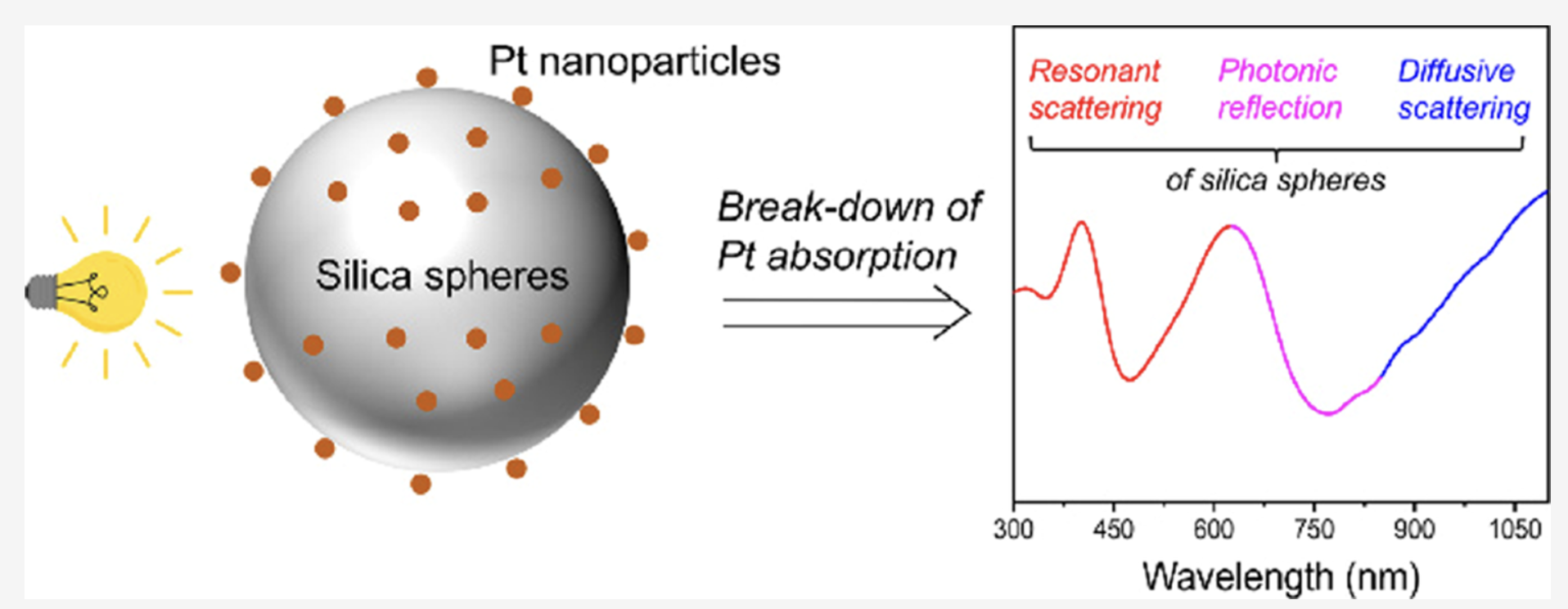Deciphering the Optical Absorption Spectra of Ultrafine Metal Nanoparticles Dispersed on Submicron Silica Spheres
Qilin Wei, Matas Simukaitis, Siyu Wu, Jonathan J. Foley, IV, and Yugang Sun*
J. Phys. Chem. C
2022

Optical absorption of metal nanoparticles on dielectric supports that do not absorb light becomes complicated due to the convolution of light scattering of the dielectric supports. Identifying the origin of optical absorption characteristics in metal/ dielectric composite materials is vital to designing materials with desirable optical absorption properties for interesting applications such as photocatalysis. In this work, we systematically investigated the optical absorption of ultrafine metal nanoparticles (ufMNPs) supported on silica spheres (SiOx-SPs) using absorption-sensitive diffuse reflectance spectroscopy (DRS) and theoretical modeling/ calculations. The comparisons between experimental measurements and theoretical predictions reveal that the SiOx-SPs in ufMNPs/ SiOx-SP composite powders exhibit three types of scattering to determine the optical absorption of the supported ufMNPs. First, localized light-scattering resonances near the surface of individual SiOx-SPs with large sizes generate enhanced electric fields to promote strong optical absorption in the ufMNPs with well-defined peaks. Second, nonunidirectional diffuse light scattered from individual SiOx-SPs with relatively small sizes penetrates the composite powders to be absorbed by the ufMNPs, exhibiting uphill and peakless absorption profiles. Third, the diffuse light can be modulated by the ordered packing of the composite particles that exhibit photonic reflection at the stop band, resulting in a valley in the DRS spectrum of a composite powder. The deconvolution of optical absorption in the ufMNPs/SiOx-SP composite particles opens an avenue to rationally design composite materials with favorable light absorption properties, for example, nonlinearity of localized absorption versus linearity of diffuse absorption.